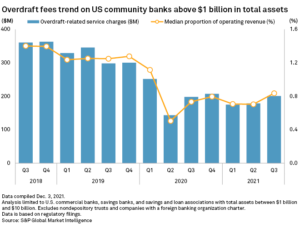The new Consumer Duty regulation from the UK’s Financial Conduct Authority (FCA) has instigated a period of great change within the financial sector, requiring financial services institutions (FSIs) – from insurers and financial advisors to payment services and technology providers – to comply with a much higher and exacting standard of customer care by July 2023.
The rules come at a time of great financial turmoil for consumers. Today in the UK, one in four adults are considered to have ‘low financial resilience’. This means that 12.9 million adults are currently in financial difficulty, or could quickly find themselves in difficulty if they were to suffer a financial shock – an increase of 2.2 million since 2020. The cost-of-living crisis, coming hot on the heels of the pandemic, has only exacerbated the issue further, putting consumers under even greater pressure. In this environment, the onus is on FSIs to look after consumers better.
Why the new Consumer Duty is a step-change
The new Consumer Duty highlights a new direction in supervision from the FCA – one focused on evidenced outcomes rather than merely intent to do good by the consumer. This suggests a move beyond box-ticking and heralds a new era of customer centricity in the financial sector. FSIs will need to demonstrate not only that they follow the right protocol, but also that they were able to measure and influence the impact of their actions on outcomes on the customer’s side.
To illustrate the point, let’s take the example of a simple contact centre call. Yes, your agent may have successfully resolved the customer’s query but did the customer walk away with the right outcome? Were they happy, anxious or angry about the resolution? Did your agent identify whether the customer was vulnerable, did they navigate them away from a potentially detrimental or harmful situation and was this information recorded and passed on to other teams dealing with the same customer?
Textbook-perfect customer interactions can still deliver sub-optimal outcomes, and this is the point of the new Consumer Duty. From now on, FSIs will have to more closely evaluate the impact of their actions. They can most effectively do this through the lens of customer experience.
Customer experience as the measure of success
There’s a plethora of rich experience insights hiding in every interaction of a customer’s journey with an organisation. Surfacing these insights will be key to demonstrating that the organisation acts in good faith to deliver good outcomes to customers, while also making sure they avoid causing harm and enable customers to reach their financial objectives.
Let’s revisit the contact centre example above in the context of a bank agent speaking to a borrower with an outstanding mortgage, who is making payments that are less than accruing interest. In this scenario, whether the agent has the right customer experience insight to hand can be the difference between the customer losing or retaining their home. That’s because, without the necessary context, the agent may only follow protocol and advise the customer to make token payments, causing the outstanding balance to escalate. However, if the agent was to take the wider customer context into account and educate the customer about the importance of making regular payments on time, that action can have the opposite, and more positive, effect on outcomes.
Providing the right tools and insight to the agent will provide the right customer experience, at the right time. This will be the biggest marker of whether an organisation is capable of delivering good outcomes – not how well they stuck to the rules. Afterall, compliance is only a means to an end, not the end in itself.
Technology can help connect the dots
With customer experience data and insight setting leaders apart from laggards in the race to customer share of wallet, it’s in FSIs’ best interest to gather, analyse and act on as much customer feedback data as possible. In particular, behavioural data will help FSIs understand the customer in a more holistic way, helping them to influence practices and therefore overall outcomes.
There are multiple ways organisations can unearth such insights. They can use Natural Language Processing to analyse contact centre logs for customer sentiments, or leverage AI to scan for emotion and tell-tale behaviours in speech or over video. They can also extract nuanced customer experience insight through customer journey illustrations and heatmaps, allowing them to analyse where customer behaviours diverge from best-practice – for example, a customer spending too long on an error-ridden webpage – signalling an imminent breakdown in journeys and thus the failure to reach a positive outcome.
How employee experience affects Consumer Duty success
The final piece of the customer-centricity puzzle – after the right tools and processes are in place – comes down to employees themselves. Customers appreciate the ‘human touch’ when interacting with organisations, but good outcomes will also depend on how supported employees feel. From a Consumer Duty standpoint – and more importantly, a customer-centric one – this means that FSIs have to consider whether their business model, strategy and culture also support staff in acting to deliver good outcomes.
Firstly, FSIs should listen to employees, especially those on the front line of customer service, since they will know best – both from their interactions with customers and their own experience – whether products or services, or the processes used to deliver them, could be improved. FSIs should encourage staff to share their feedback in company-wide forums and ‘crowdsource’ ideas from multiple departments and job roles to come up with solutions.
Secondly, FSIs should take action from customer experience data and use it to upskill staff. For example, by recording and analysing contact centre logs, organisations can uncover evidence of gaps in staff knowledge, situations where actions may not have met expectations, and understand what remedial actions agents most often reach for, as well as how effective those are. With the right technology foundations, FSIs can analyse insights at scale and turn them into business action, use them for coaching, or repackage them as best-practice guidance for agents to see in real-time as they interact with customers.
Separating the leaders from the laggards
A comprehensive customer experience strategy touching on all these points will help FSIs future-proof their organisations and establish a customer-centric culture that delivers competitive advantages far beyond any benefits of compliance. In fact, it’s been shown that organisations with a superior customer experience are 26 times more likely than laggards to experience revenue growth of 20 percent or more. They are also 2.8 times more likely than laggards to meet financial targets and be viewed as a great place to work.
Customer experience leaders in the financial sphere will have a single source of truth in customer data woven through the fabric of the organisation and a customer-centric focus in everything they do. Right from the start, they engineer customer touchpoints – whether that’s online or in an app, in-person or over the phone – with an outside-in approach, as dictated by customer needs, not strictly from a business point-of-view. This is the level of excellence FSIs must aspire to in light of the new Consumer Duty regulation.
Go all-in for customer-centricity
The new Consumer Duty requires a new way of thinking that is unlike anything seen before in the financial sector. Merely achieving compliance shouldn’t be a company’s goal. After all, the new rules merely codify the standards consumers have come to expect in recent years. By not acting on their needs, organisations gamble more than just a fine and a slapped wrist from the regulator – they run the risk of consumers voting with their feet.
As consumers’ purse strings tighten and competition across the industry heats up, a data-driven and customer-centric strategy will separate the best from the rest in the race to secure the customer.
- ant financial
- blockchain
- blockchain conference fintech
- chime fintech
- coinbase
- coingenius
- crypto conference fintech
- fintech
- fintech app
- fintech innovation
- Fintextra
- OpenSea
- PayPal
- paytech
- payway
- plato
- plato ai
- Plato Data Intelligence
- PlatoData
- platogaming
- razorpay
- Revolut
- Ripple
- square fintech
- stripe
- tencent fintech
- xero
- zephyrnet













